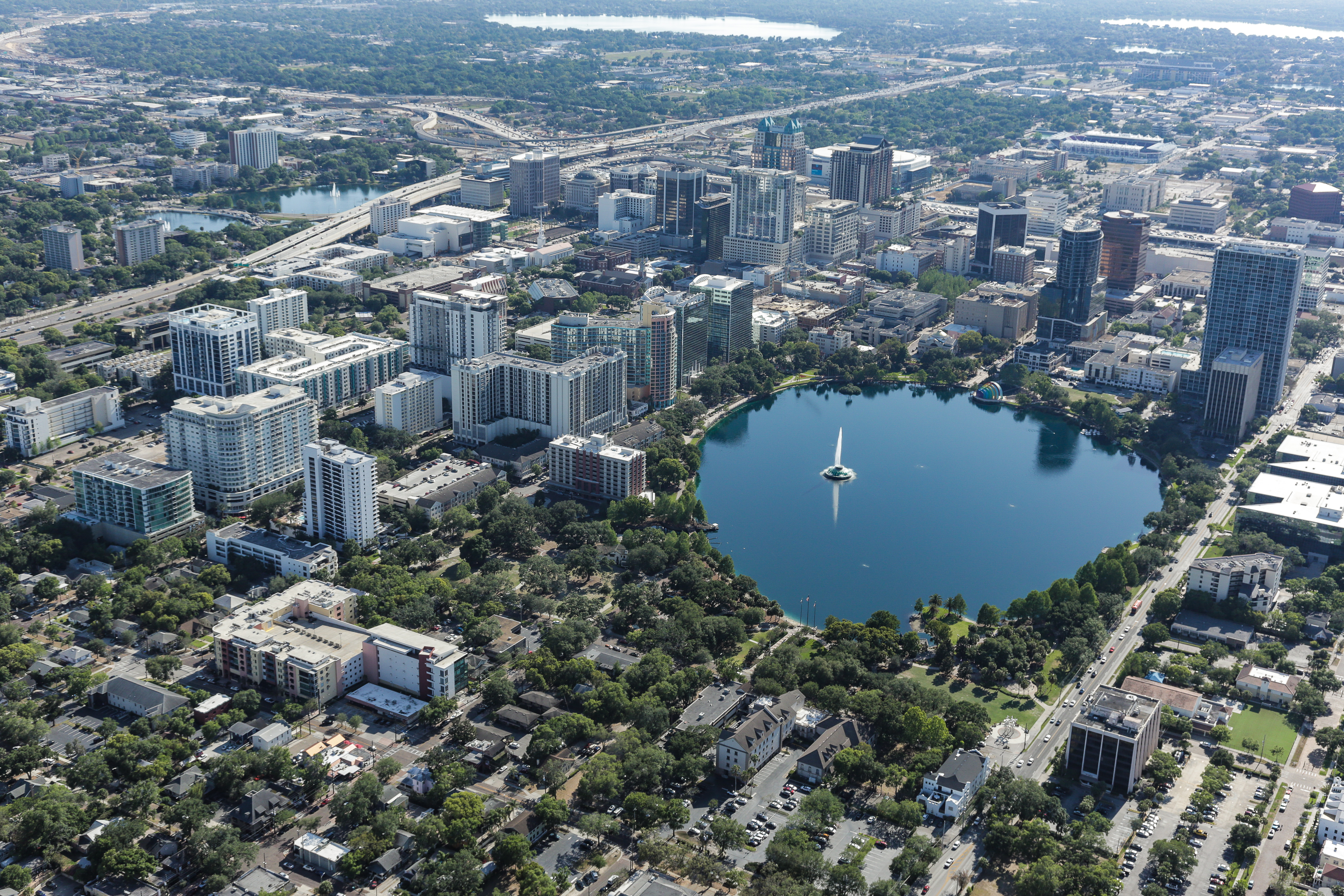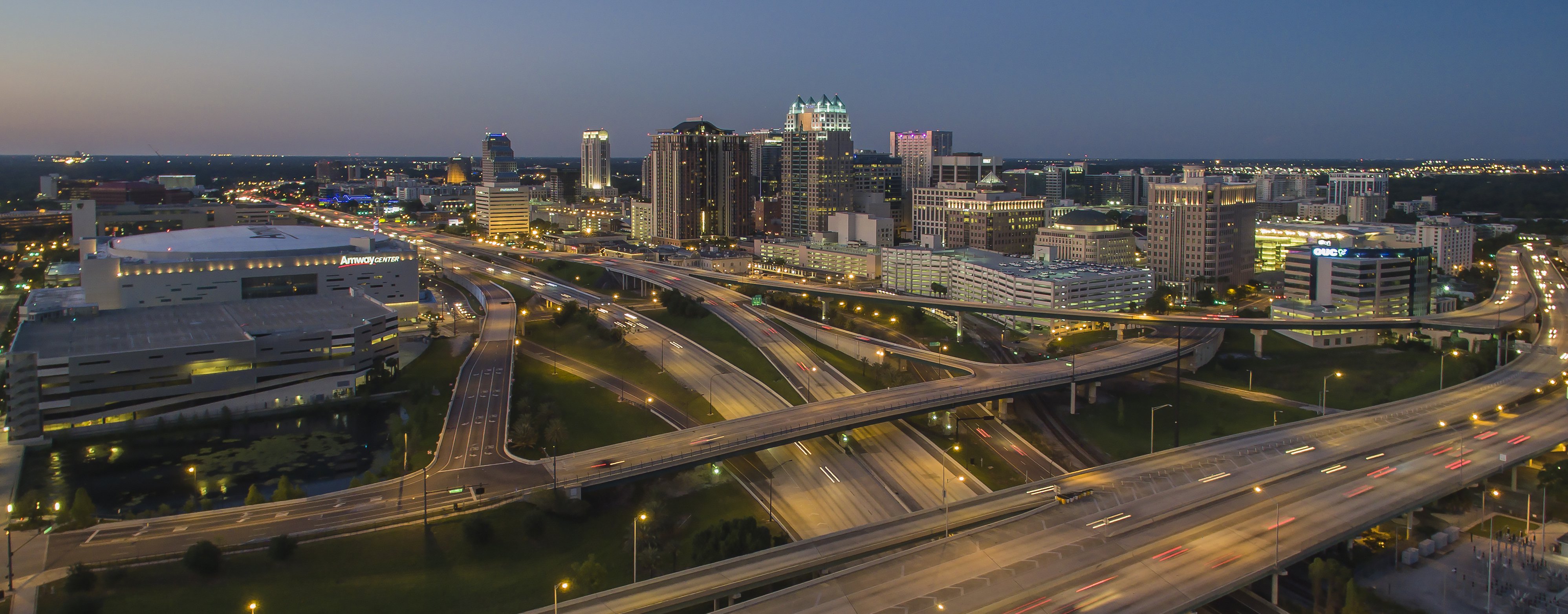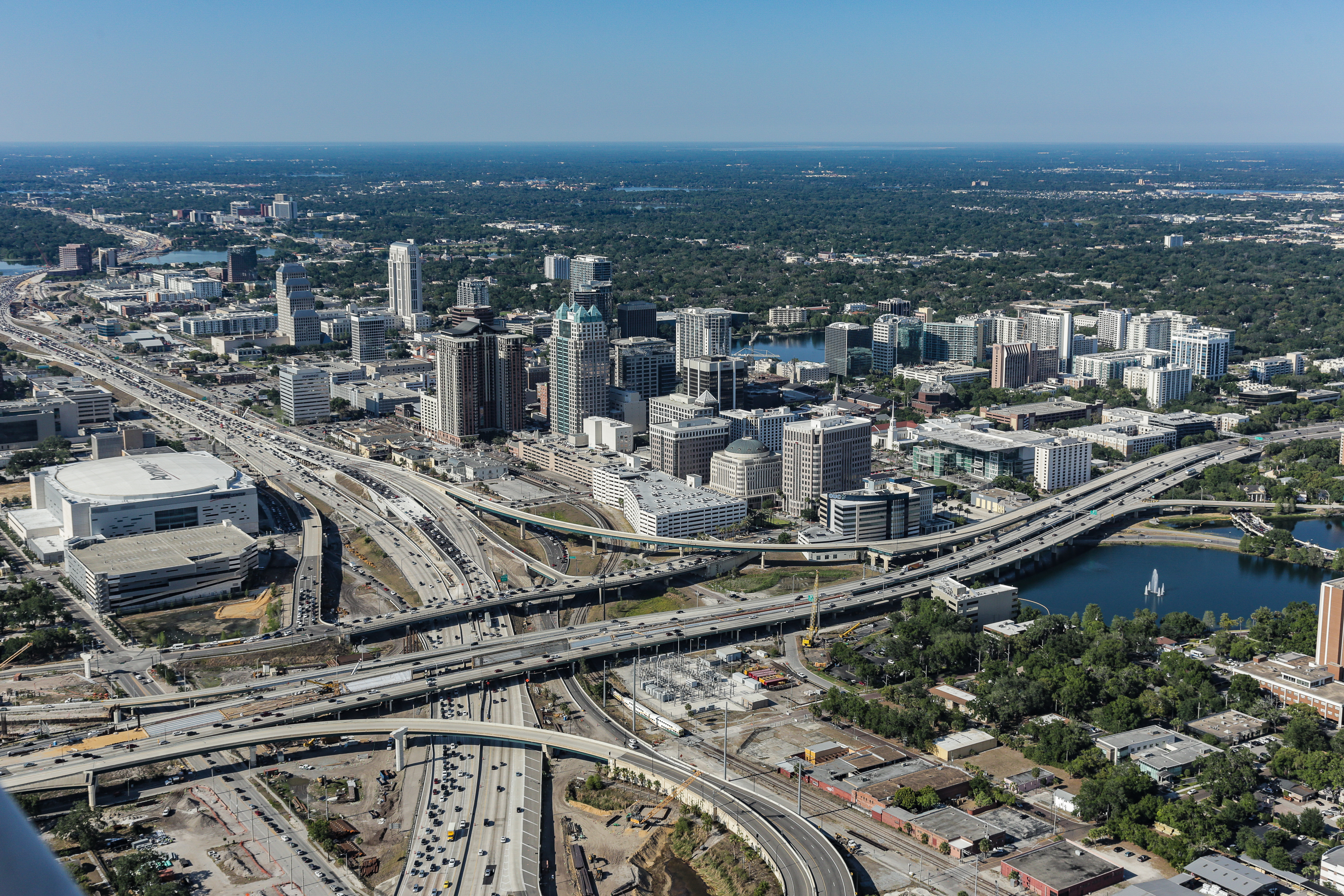As the rate of natural population increase in the U.S. declines, migration will become the dominate force behind national population growth. As this trend continues, the Orlando region will continue to attract new residents both domestically and internationally. This surge in migration to Central Florida of people from all over the world will make Orlando an epicenter for diversity and growth.

For the first time in a decade, many United States counties and large metros are facing population loss. Brookings Institute reports that for the past two years, growth rates have declined in large metro areas, while non-metro areas are gaining an unprecedented level of population growth. The United States fertility rate has steadily decreased, falling from 3.19 births per woman in 1964 to 1.80 births per woman in 2016.
By 2030, projections of the natural rate of increase (more births than deaths) show that, for the first time in the nation’s history, immigration is poised to overtake natural increase as the main driver of population growth in the country. Immigration serves as a solution, reducing losses in many large metro areas. Of the 1,662 counties that decreased in population over the 2010-2018 period, immigration stemmed losses by at least 50 percent in 272 counties, and by at least one-fifth in 486, including many in the nation’s slow-growing Heartland.
The U.S. has long considered itself a nation of immigrants. The Wall Street Journal reported that immigration attributed 48 percent of population growth for the fiscal year, up 35 percent from 2011. Locally, this story is even more pronounced; Orlando is a perfect demonstration of the decrease in the natural increase and dependency on in-migration, both domestic and international, to sustain population growth. One in every nine Orlando residents moved here since 2010, half of them from another country.
A Story of a Population
Total population change is measured by the natural rate of increase (births minus deaths) plus changes in in-migration (domestic and international). Only 12 percent of Orlando’s population growth came from natural increase since 2010, lower than many other major metros including Atlanta, where natural increase accounts for almost half of population growth.
The graph below features the components of population change for Orlando and other fast growing, dynamic regions.
Components of Population Change (2010-17)

Growth is nothing new for Orlando. The Orlando metropolitan statistical area (MSA) population experienced an advantageous increase over the past 60 years. From 2016 to 2017, the Orlando MSA population grew at a rate of more than two percent, reaching a population of 2.5 million in 2017.
A large portion of this growth is due to the contribution of international in-migration. In 2017 the region attracted approximately 22,200 people (430 per week) from outside the country, a contribution of 39 percent to total population growth.
Looking back farther, from 2011 to 2017, the region experienced a 127 percent increase in the annual number of immigrants who chose to call Orlando home (9,800 per year in 2011 to 22,200 per year in 2017). In 2017, Orange County experienced the largest share of international in-migration, as the county attracted 13,700 people from outside the country or 48 percent of the region’s total international migration, followed by Osceola, Seminole and Brevard County.
International In-Migration (2016-17)
| County | Total | Per Week | Percent Share of Regional Total * |
| Brevard County | 1,437 | 28 | 5% |
| Lake County | 974 | 19 | 3% |
| Orange County | 13,700 | 263 | 48% |
| Osceola County | 5,453 | 105 | 19% |
| Polk County | 3,171 | 61 | 11% |
| Seminole County | 2,080 | 40 | 7% |
| Volusia County | 1,498 | 29 | 5% |
*Numbers may not sum due to rounding.
Source: U.S. Census Bureau, American Community Survey 2017
International In-Migration Forecast

The international immigrant population in Orlando is estimated to be over 879 thousand by 2030. What then does Orlando’s international population look like, and where is this influx of new Orlandoans coming from? Analyzing the Census data give a snapshot of the sources of the international migration influx.
It’s A Small World After All
The chart below divides the non-U.S. born seven-county population by the place of origin. The highest apportionments of the international born population in the region are from South America, Central America and the Caribbean, adding up to an estimated 66 percent. Oceania and Africa have the least apportionments in population with just over three percent share. This base is unsurprising given the strong Latin and Hispanic culture present in Orlando.
2017 International Born Population

On the other hand, the fastest growing, international populations in Orlando are from Eastern and Western Asia and Northern Africa. Distinctly, Orlando’s greatest number of international immigrants from a single country come from the Philippines at a change of more than 12,400 immigrants. The table below illustrates the top five sources of immigrants into the Orlando MSA.
Source of Immigrants (2010-17)
| Country | Population Growth |
| Philippines | 12,484 |
| Venezuela | 12,012 |
| India | 11,893 |
| Haiti | 10,118 |
| Vietnam | 9,072 |
Source: U.S. Census Bureau, American Community Survey
An Epicenter for Diversity and Growth
Immigration leads to significant changes in labor market performances, both for natives and the foreign-born populations. It also provides an improved level of GDP per capita and per person employed. As Orlando faces major demographic changes over the coming decade, the influx of both domestic and international migrants will sustain economic growth in the region. With its continuous growth in international migration, Orlando has become one of the nation’s leading regions in racial and ethnic diversity.





